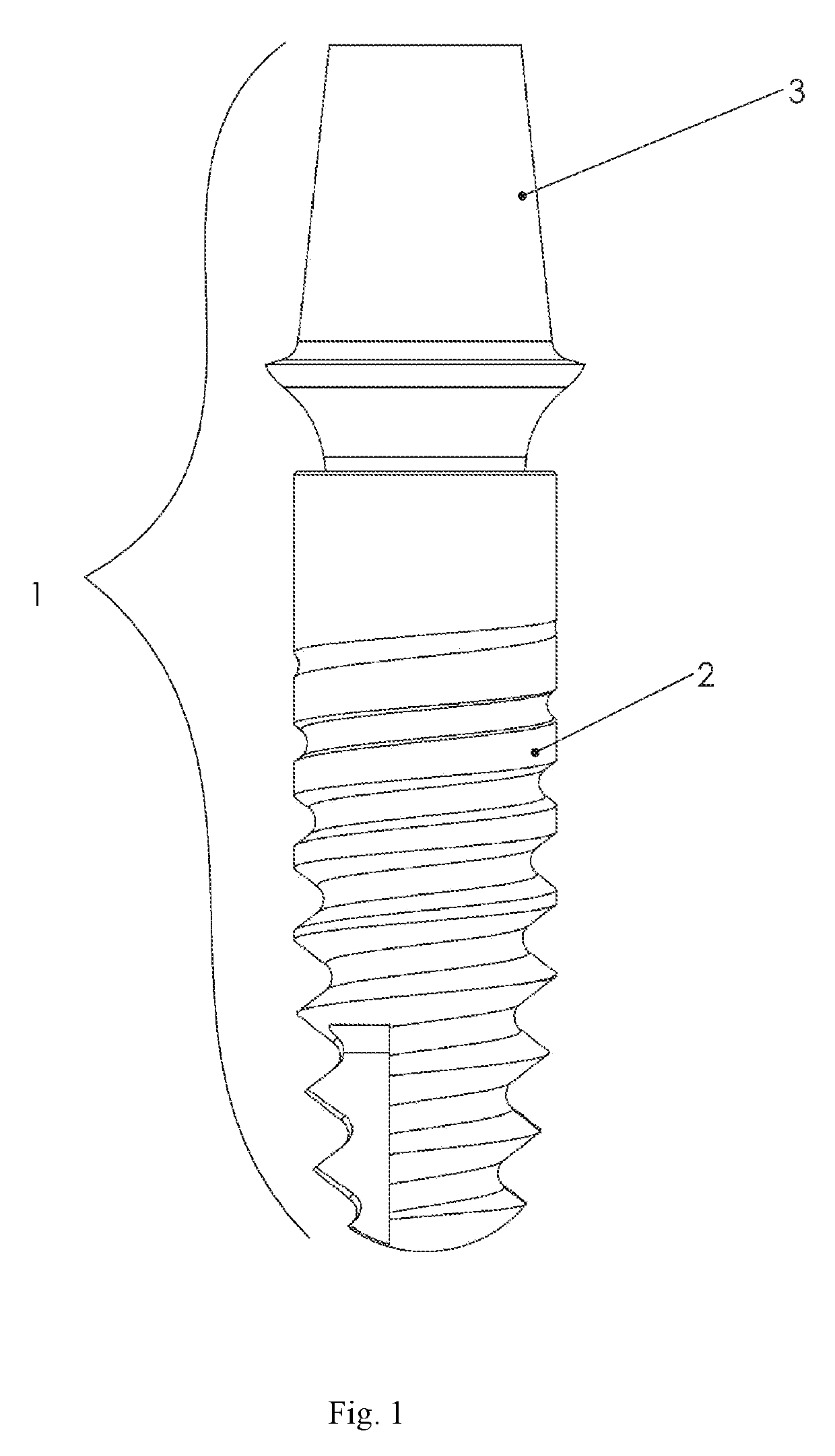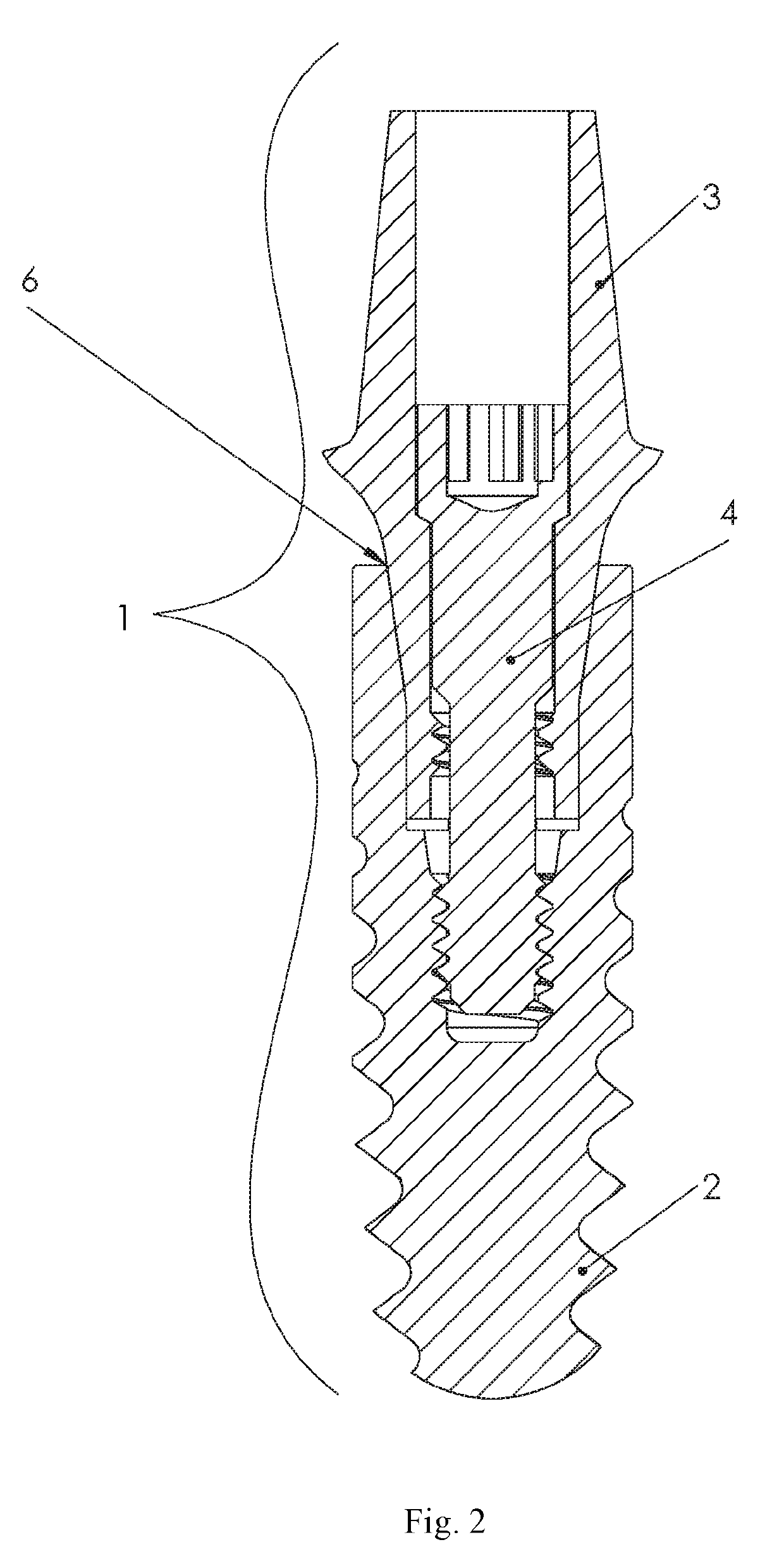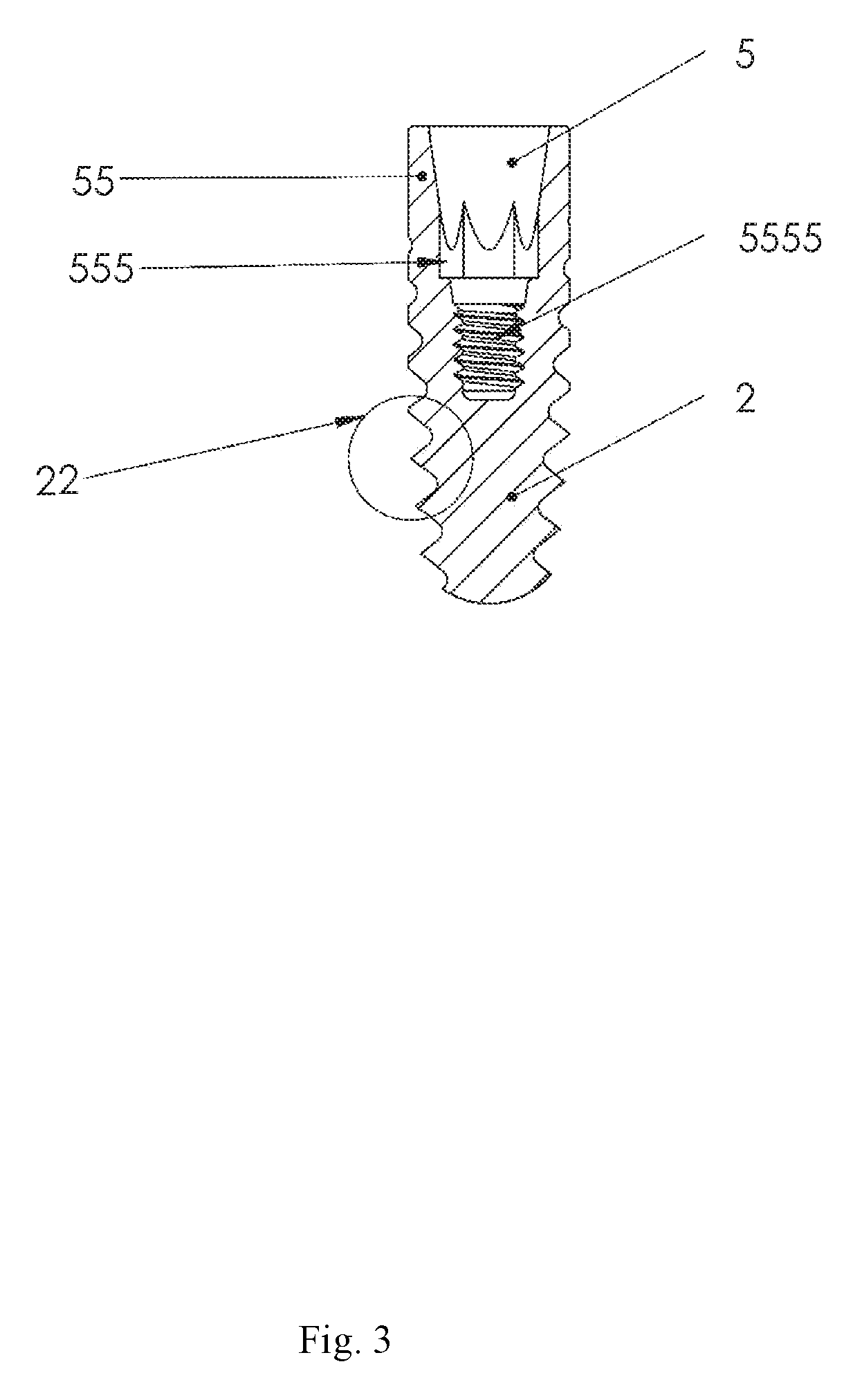Dental implant
a technology for dental implants and implants, applied in dental implants, dental surgery, medical science, etc., can solve the problems of not being able to withstand early mastication loads, not always solving, and reducing so as to reduce the nominal diameter of the screw, increase the implant, and the effect of the highest joint strength
- Summary
- Abstract
- Description
- Claims
- Application Information
AI Technical Summary
Benefits of technology
Problems solved by technology
Method used
Image
Examples
Embodiment Construction
[0042]The device works as follows. To place the dental implant 1 in the patient's mouth, at the first stage of treatment, it is provided that the base part 2 is mounted in the jaw bone. For this, the base part 2 has a thread 22 on the outside, made as a self-driving thread, so that the placement in the jawbone can be done by screwing in. In this case, the thread 22 pitch can be made uniform or variable, and due to the appropriate choice of parameters, possible various biological factors, etc., as well as different types of implantation can be taken into account. In this case, the design and parameters of the thread 22 are calculated, in particular, taking into account the desired high primary stability and uniform transmission of forces arising from the mastication load of the dental implant to the jaw bone. In combination with a properly formed cone, a self-holding joint is detected when the abutment is inserted into the implant. Thereby, additional stability of the joint is achiev...
PUM
 Login to View More
Login to View More Abstract
Description
Claims
Application Information
 Login to View More
Login to View More - R&D
- Intellectual Property
- Life Sciences
- Materials
- Tech Scout
- Unparalleled Data Quality
- Higher Quality Content
- 60% Fewer Hallucinations
Browse by: Latest US Patents, China's latest patents, Technical Efficacy Thesaurus, Application Domain, Technology Topic, Popular Technical Reports.
© 2025 PatSnap. All rights reserved.Legal|Privacy policy|Modern Slavery Act Transparency Statement|Sitemap|About US| Contact US: help@patsnap.com



